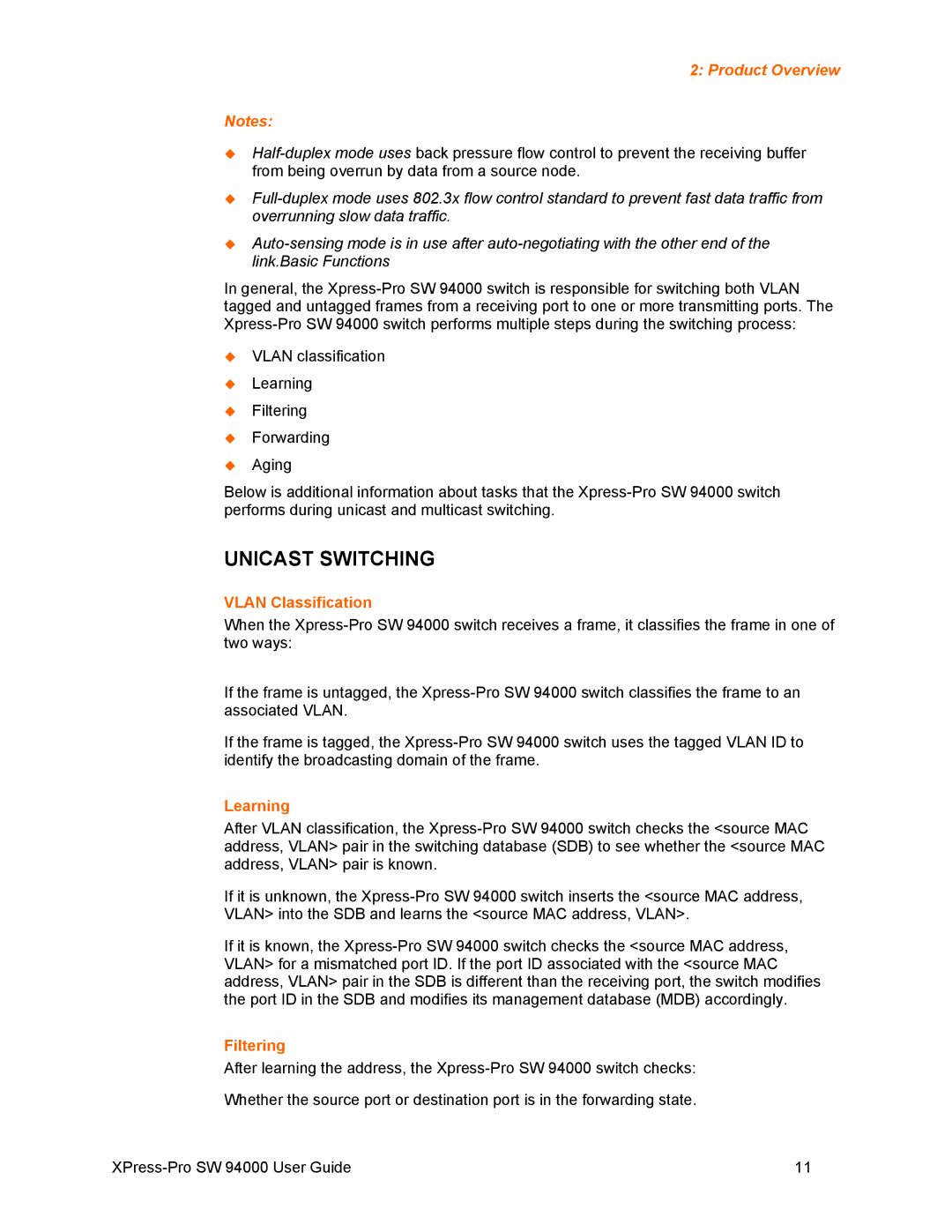2: Product Overview
Notes:
Half-duplex mode uses back pressure flow control to prevent the receiving buffer from being overrun by data from a source node.
Full-duplex mode uses 802.3x flow control standard to prevent fast data traffic from overrunning slow data traffic.
Auto-sensing mode is in use after auto-negotiating with the other end of the link.Basic Functions
In general, the Xpress-Pro SW 94000 switch is responsible for switching both VLAN tagged and untagged frames from a receiving port to one or more transmitting ports. The Xpress-Pro SW 94000 switch performs multiple steps during the switching process:
VLAN classification
Learning
Filtering
Forwarding
Aging
Below is additional information about tasks that the Xpress-Pro SW 94000 switch performs during unicast and multicast switching.
UNICAST SWITCHING
VLAN Classification
When the Xpress-Pro SW 94000 switch receives a frame, it classifies the frame in one of two ways:
If the frame is untagged, the Xpress-Pro SW 94000 switch classifies the frame to an associated VLAN.
If the frame is tagged, the Xpress-Pro SW 94000 switch uses the tagged VLAN ID to identify the broadcasting domain of the frame.
Learning
After VLAN classification, the Xpress-Pro SW 94000 switch checks the <source MAC address, VLAN> pair in the switching database (SDB) to see whether the <source MAC address, VLAN> pair is known.
If it is unknown, the Xpress-Pro SW 94000 switch inserts the <source MAC address, VLAN> into the SDB and learns the <source MAC address, VLAN>.
If it is known, the Xpress-Pro SW 94000 switch checks the <source MAC address, VLAN> for a mismatched port ID. If the port ID associated with the <source MAC address, VLAN> pair in the SDB is different than the receiving port, the switch modifies the port ID in the SDB and modifies its management database (MDB) accordingly.
Filtering
After learning the address, the Xpress-Pro SW 94000 switch checks:
Whether the source port or destination port is in the forwarding state.
